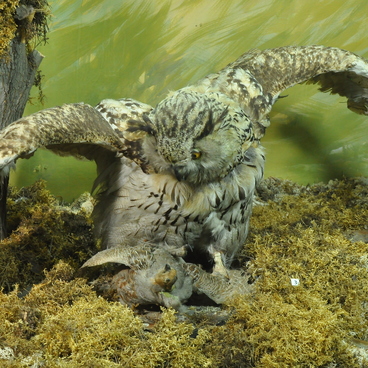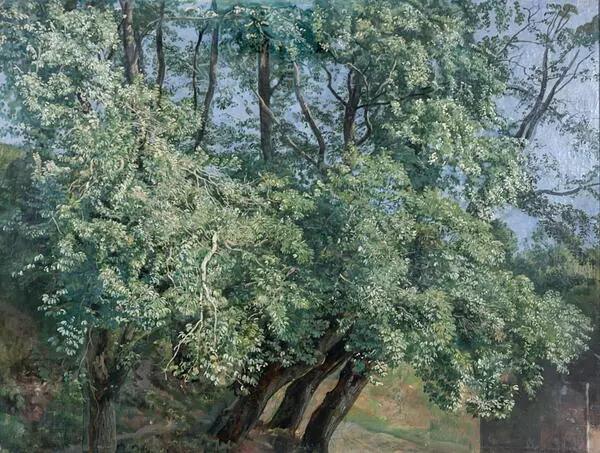The Ural owl (Strix uralensis) belongs to the owl order (Strigiformes). It is one of the biggest Strix owls: a large grey bird with numerous dark and light streaks. It can be up to 70 cm large, with a wing span up to about 115 cm. The principal distinctive feature of the species is a long, wedge-shaped tail with dark barring; when the owl sits on a tree, the tail protrudes far from under the furled wings. Females are larger than males.
The species populates diverse terrains from coniferous taiga forests to birch groves. Their preference is mixed and tall forests with open spaces and clearings like glades, marshes, or fire sites. Owl couples stick to their territories and settle in an area all year round provided there is enough food.
The territorial call of the Ural owl is long and low humming and an even lower double sound. Females lay two to four white eggs in April. The female starts sitting upon the first egg immediately. While it sits it doesn’t hunt and waits for the male to bring food. An egg normally takes 28 days to hatch, with the young appearing at two nights intervals.
The hatched birdlings stay in the nest for a month. The littling mortality of this species is very high, so the ready-to-fly brood seldom has more than two young birds. In case of danger, both parents come to their hatch rescue.
Of all owls in the Kurgan region, this one is the most universal hunter. It feeds on birds, up to the size of a quail or woodgrouse, hares and ground squirrels, frogs and insects. Their preferred and most frequent food is field and wood mice, and squirrels. Ural owls are mostly active in the dusk, but often they start hunting long before evening and even in day time, especially in dull weather. If they are hungry in winter, Ural owls migrate easily and are often to be seen in cities.
The maximum recorded age of a Ural owl is 14 years. The bird is included in the Kurgan Oblast Red Book of Endangered Species.










